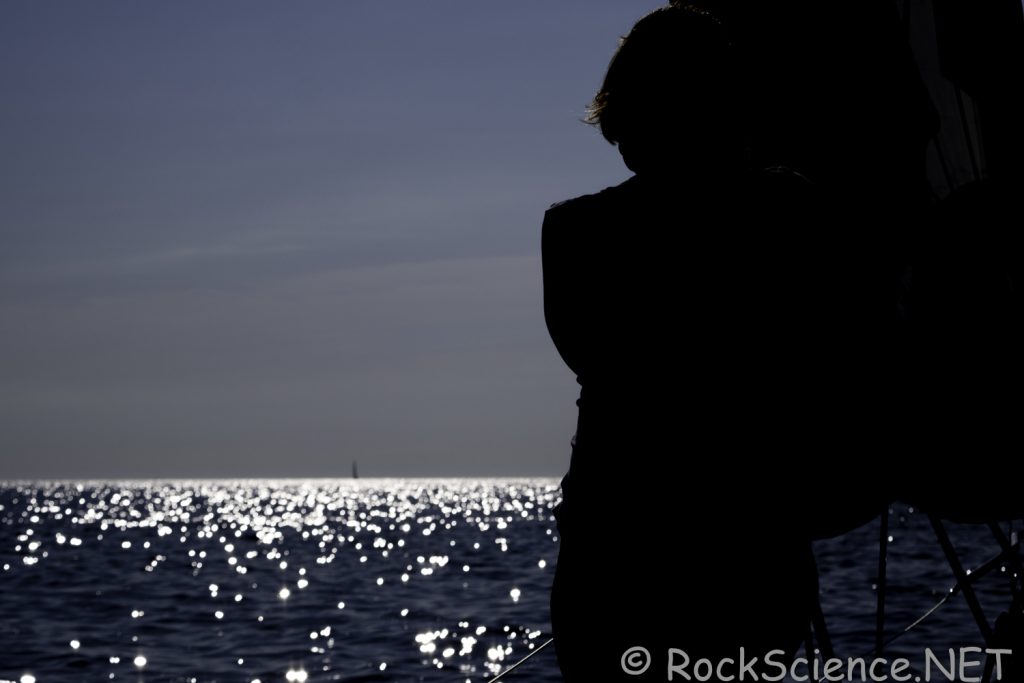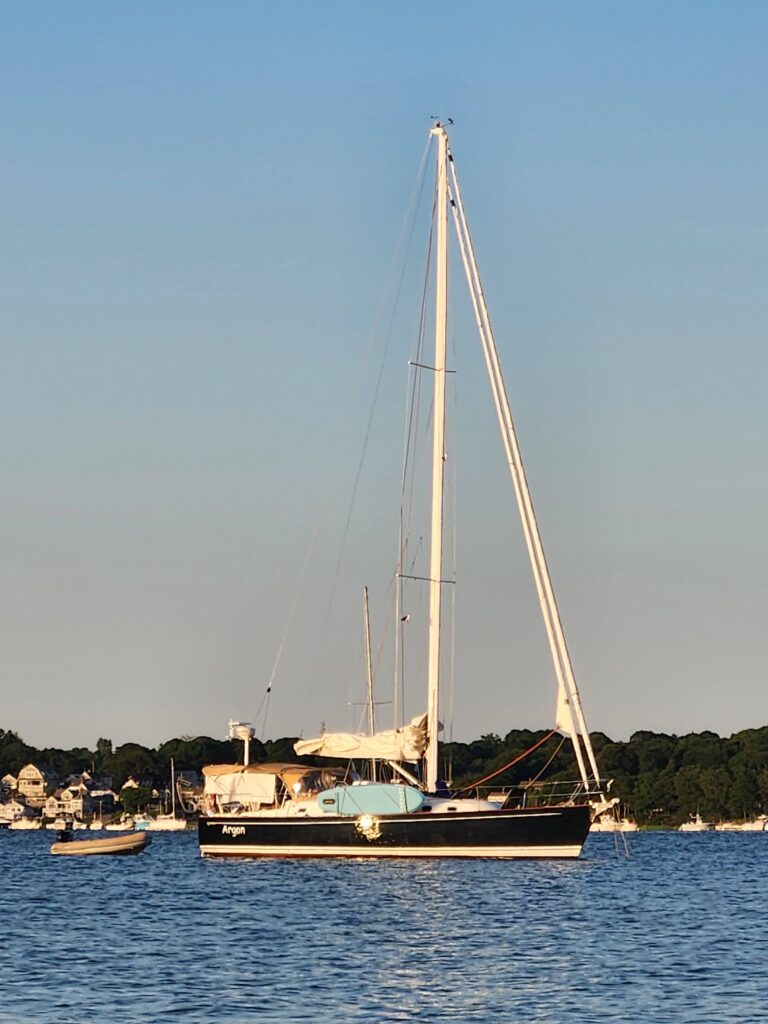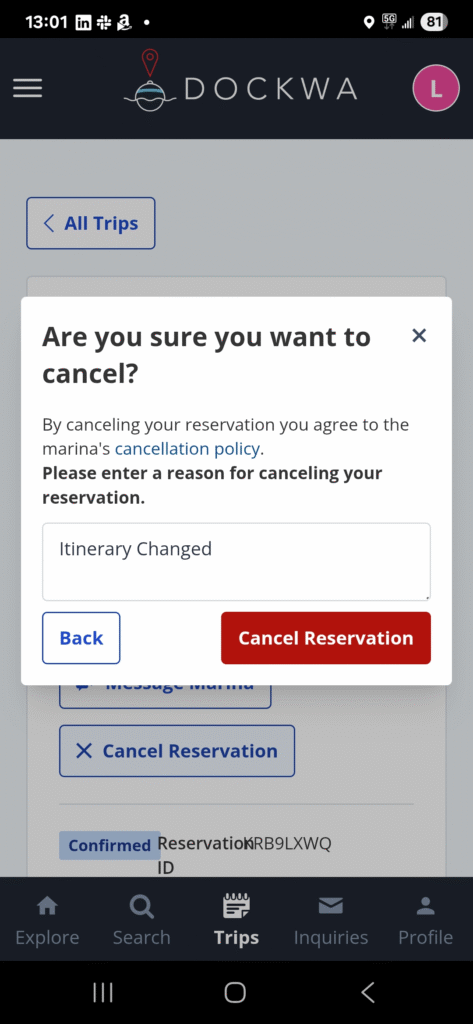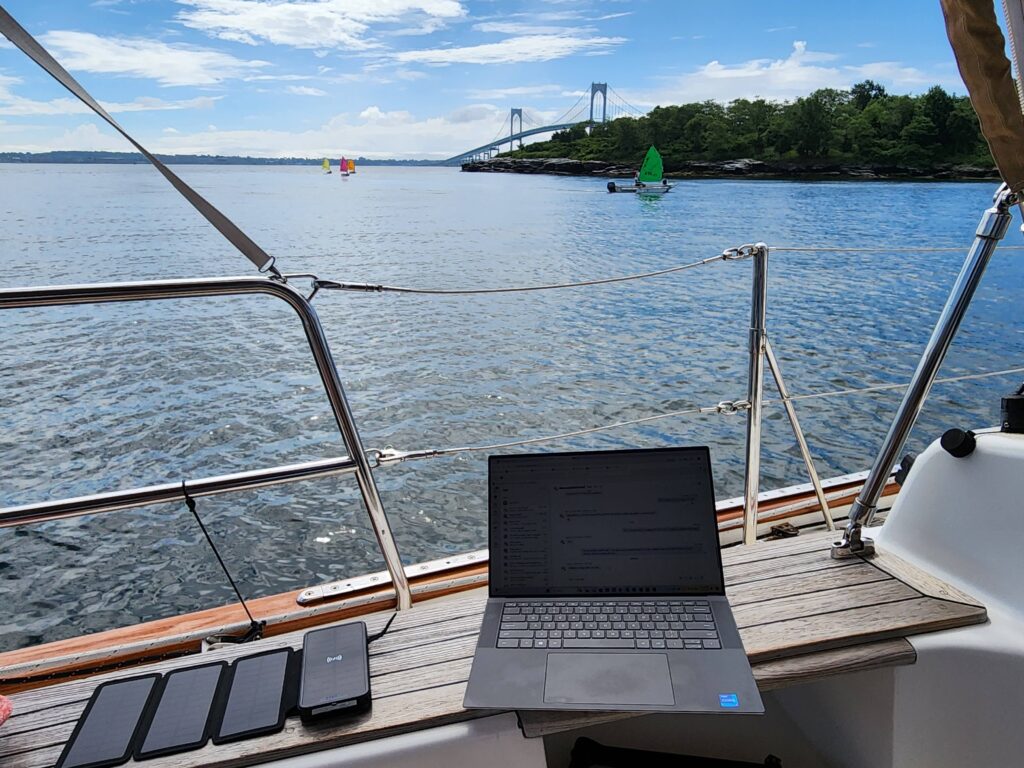For years, like most sailors, we meticulously planned our cruising itineraries—reserving moorings, plotting waypoints, and committing to rigid schedules. But over the past few seasons, we’ve embraced a different approach: no-itinerary sailing. No fixed route, no locked-in reservations—just the wind, the waves, the weather and the freedom to change course on a whim.
The results? More sailing, much less motoring, and a deeper connection to the rhythm of the sea.

Why We Switched to No-Itinerary Sailing
1. Sailing, Not Motoring
When you commit to an itinerary in advance, you’re at the mercy of the weather—and more often than not, that means a lot of motoring. Traditional flotillas and group cruises almost always involve long stretches under engine power because sticking to a schedule means ignoring optimal sailing conditions.
We’ve seen it firsthand: friends on an organized four-week cruise motored 80% of the time to follow the itinerary last year (this itinerary was presented to the group at a meeting seven months earlier in January!). Meanwhile, aboard Argon (our 11-year-old sailboat), we’ve put only 30 engine hours over the last two seasons—because we let the wind decide where and when we go.
2. Flexibility = Better Sailing
In 2023, we were anchored in Scituate Harbor, planning to sail to Provincetown the next afternoon due to a forecasted morning calm. But at 5 AM, the rigging started singing—8 knots of wind from the perfect direction for a beam reach to Salem (another planned stop). By 5:15 AM, we were off the mooring, enjoying a glorious sail to a destination we hadn’t even considered the night before. Provincetown would have been straight upwind in light air – and could wait. The wind, it seems does not always follow instructions – and we adapt to it.
Without a rigid schedule, we could chase the best wind, lingering in favorite places, or altering course entirely.
3. Less Stress, More Adventure
Fixed itineraries create pressure: “We have to make it to Martha’s Vineyard by Tuesday or lose our mooring!” No-itinerary cruising removes that stress. If the wind shifts or a storm rolls in, we adjust—no penalties, no frantic calls to marinas.
Instead of racing to a reservation, we’ve discovered anchorages we’d never have considered, met fellow sailors who became lifelong friends, and stumbled upon waterfront towns that weren’t even on our radar.
Here is Argon’s July 2024 track. Most of the destinations decided within 36 hours of arrival…
The Challenges of No-Itinerary Cruising
1. Working While Cruising
We’re not full-time liveaboards—we work remotely, which means meetings, deadlines, and work fires complicate our fluid plans. Unlike wind forecasts, Zoom calls don’t change.
One memorable scramble involved leaving Hadley Harbor at 3 AM to reach Cuttyhunk in time for a morning meeting. After three failed anchoring attempts in tricky sea grass, we grabbed a mooring with 10 minutes to spare. Not every day is perfect, but the trade-off—sailing when we want, where we want—is worth it.
2. Mooring Anxiety (or Lack Thereof)
Popular harbors fill up fast, especially in peak season. Without reservations, we sometimes take our chances—monitoring marina availability via apps like Dockwa or arriving early to snag a first-come, first-served spot.
But, there’s an anchor! Navionics and other apps show in great detail all the places you can anchor (often with reviews from people who have dropped a hook there).
3. Laundry, Food and other boring essentials.
If you’re out long enough, the real life stuff eventually catches up with you. At some point, you’ll need clean clothes, fresh food, water for the tanks (for those of us without water makers), and—hopefully not—a replacement part or two. Planning a stop where you can access laundry, grocery stores, and a marine supply shop becomes part of the rhythm. If we see a string of rainy days coming, we’ll often plan a dock stop. It makes life easier: laundry ashore, shore power for the A/C, and a chance to restock without the dinghy shuffle.
3. Buddy Boats & Social Sailing
We normally do not join organized group cruises—but we do cross paths with some of the cruises from one of our clubs. Doing no-itin cruising with a group of boats can be challenging because of the need to reserve enough moorage or dockage. But with one or two other boats, the daily “next steps” strategy meetings can be fun.


How to Make No-Itinerary Cruising Work
1. Have a General Plan (But Stay Flexible)
We keep a mental list of destinations we’d like to hit over the time we have—but never in a fixed order. If the wind favors one over another, we go where it takes us.
2. Master Weather Routing
- Use tools like PredictWind, Windy, or SailGrib to analyze forecasts.
- Learn to read surface pressure maps to anticipate shifts.
- Stay adaptable—sometimes the best sailing happens when you least expect it.
3. Important – Think two (or more) steps ahead
The wind direction is great for getting to Block Island tomorrow? That’s great- but can you get to your next hopeful destination two days after that? Avoid the cruising cul-de-sac and maybe consider reversing the order of some planned destinations.
4. Embrace Anchoring (and Backup Plans)
- Scout multiple anchorage options in your cruising area.
- Always have Plan B (and C and D)
- There are lots of great anchorage options in Narragansett bay
5. Avoid “where AND when” commitments
- If you do want to meet up with friends and family, you can say when or where but you can’t say both.

The Joy of Sailing on Nature’s Terms
No-itinerary cruising isn’t for everyone. If you thrive on structure or love the camaraderie of big flotillas, a fixed route might suit you better. But if you crave true sailing freedom—where the wind dictates your path and every day is an open sea of possibilities—then ditching the schedule might be the answer.
The other part of this is that it is actually fun to strategize an optimal short-term plan and continually re-evaluate it. It makes cruising a bit of a puzzle and we like that.
For us, it’s meant more sails raised, fewer engine hours, and memories we’d have missed if we’d stuck to a plan.
Would You Try No-Itinerary Cruising?
Have you experimented with flexible sailing plans? What challenges or rewards have you found? Share your stories in the comments!

Leave a Reply